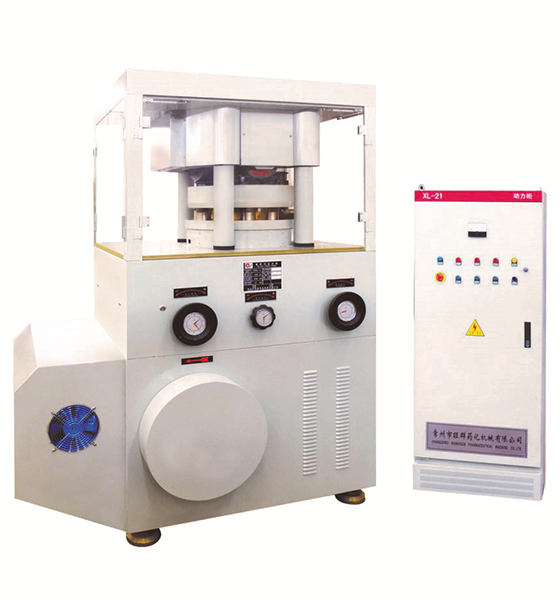Tablet Press Preventive Maintenance Plan
1. Introduction
A tablet press is a critical piece of equipment in pharmaceutical and nutraceutical manufacturing, responsible for compressing powder blends into tablets of uniform size, weight, and hardness. To ensure consistent performance, minimize downtime, and extend the machine’s lifespan, a well-structured preventive maintenance (PM) plan is essential.
This document outlines a comprehensive preventive maintenance plan for tablet presses, covering daily, weekly, monthly, quarterly, and annual maintenance tasks. The plan includes lubrication schedules, inspection checklists, calibration procedures, and troubleshooting guidelines to maintain optimal performance.
---
2. Objectives of Preventive Maintenance
The primary objectives of a tablet press preventive maintenance plan are:
- Ensure consistent tablet quality (weight, hardness, thickness, and disintegration).
- Minimize unplanned downtime by detecting and addressing potential issues early.
- Extend equipment lifespan by reducing wear and tear.
- Comply with regulatory standards (e.g., FDA, GMP, ISO).
- Improve operational efficiency by maintaining peak performance.
---
3. Preventive Maintenance Schedule
3.1 Daily Maintenance
Daily checks ensure smooth operation and early detection of issues.
Tasks:
1. Visual Inspection
- Check for loose bolts, nuts, or misaligned parts.
- Inspect electrical connections and safety interlocks.
- Look for leaks (oil, grease, hydraulic fluid).
2. Cleaning
- Remove residual powder from the press, hopper, and feed frame.
- Wipe down surfaces with approved cleaning agents.
- Clean punches and dies to prevent sticking or capping.
3. Lubrication
- Apply light machine oil to moving parts (e.g., cams, guides, turret bearings).
- Check oil levels in hydraulic systems (if applicable).
4. Performance Check
- Verify tablet weight and hardness consistency.
- Monitor for unusual noises or vibrations.
---
3.2 Weekly Maintenance
Weekly tasks focus on deeper cleaning and component inspection.
Tasks:
1. Punch and Die Inspection
- Check for wear, cracks, or deformation.
- Polish punches if necessary to prevent sticking.
2. Turret and Cam Tracks
- Inspect for wear or scoring.
- Lubricate with high-quality grease.
3. Feeding System
- Clean and inspect feed paddles and hopper agitators.
- Ensure smooth powder flow without segregation.
4. Safety Checks
- Test emergency stop buttons and guards.
- Verify pressure and speed settings.
---
3.3 Monthly Maintenance
Monthly maintenance involves detailed inspections and minor adjustments.
Tasks:
1. Belt and Chain Inspection
- Check tension and alignment.
- Replace if worn or damaged.
2. Hydraulic and Pneumatic Systems
- Inspect hoses and fittings for leaks.
- Check air pressure and hydraulic fluid levels.
3. Electrical Components
- Inspect wiring and connections for wear.
- Test sensors and limit switches.
4. Tooling Calibration
- Verify punch and die alignment.
- Adjust compression force if needed.
---
3.4 Quarterly Maintenance
Quarterly tasks involve more thorough inspections and part replacements.
Tasks:
1. Bearing and Shaft Inspection
- Check turret bearings for wear.
- Lubricate or replace as needed.
2. Motor and Drive System
- Inspect motor brushes and belts.
- Test variable frequency drives (VFDs).
3. Control System Check
- Calibrate load cells and pressure sensors.
- Update software if applicable.
4. Deep Cleaning
- Disassemble and clean critical components.
- Remove built-up residue from hard-to-reach areas.
---
3.5 Annual Maintenance
Annual maintenance is a comprehensive overhaul to ensure long-term reliability.
Tasks:
1. Complete Disassembly & Inspection
- Remove and inspect all major components.
- Replace worn parts (bearings, seals, gaskets).
2. Alignment & Calibration
- Re-align turret, cams, and press frames.
- Calibration of force, speed, and weight control systems.
3. Lubrication Overhaul
- Drain and replace hydraulic and gear oils.
- Re-grease all moving parts.
4. Electrical System Audit
- Test all circuits and connections.
- Replace damaged wiring or components.
5. Performance Validation
- Run test batches to verify tablet quality.
- Document all adjustments and replacements.
---
4. Lubrication Schedule
Proper lubrication reduces friction and wear.
| Component | Lubricant Type | Frequency |
|------------------------|--------------------------|---------------|
| Turret Bearings | High-temperature grease | Weekly |
| Cam Tracks | Synthetic grease | Weekly |
| Punch Guides | Light machine oil | Daily |
| Hydraulic System | ISO-grade hydraulic oil | Quarterly |
| Drive Chains | Chain lubricant | Monthly |
---
5. Common Issues & Troubleshooting
| Issue | Possible Cause | Solution |
|------------------------|--------------------------|---------------|
| Tablet weight variation | Uneven powder feed, worn punches | Adjust feed system, replace tooling |
| Sticking tablets | Poor lubrication, rough dies | Polish dies, apply anti-stick coating |
| Excessive noise | Loose components, bearing wear | Tighten bolts, replace bearings |
| Machine jamming | Misaligned punches, foreign objects | Realign tooling, clean press |
---
6. Documentation & Record Keeping
Maintain detailed records for compliance and traceability:
- Maintenance logs (date, tasks performed, parts replaced).
- Calibration certificates (force, weight, speed).
- Lubrication records (type, quantity, frequency).
- Training records (staff competency in maintenance tasks).
---
7. Conclusion
A well-executed preventive maintenance plan ensures tablet presses operate efficiently, produce high-quality tablets, and comply with regulatory standards. By following daily, weekly, monthly, quarterly, and annual maintenance schedules, manufacturers can minimize downtime, reduce repair costs, and extend equipment life.
Regular inspections, proper lubrication, and timely part replacements are key to maintaining optimal performance. Additionally, thorough documentation ensures traceability and compliance with industry regulations.
Implementing this preventive maintenance plan will help achieve consistent tablet production while maximizing the lifespan of the tablet press.
End of Document (Approx. 2000 words)











 телефон
телефон
Комментарий
(0)